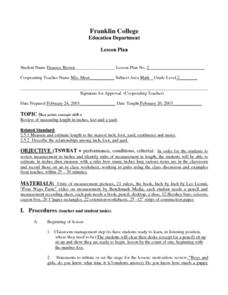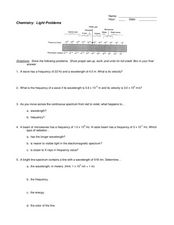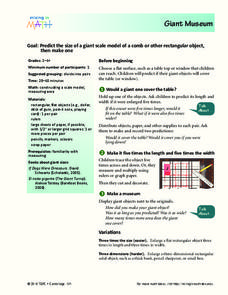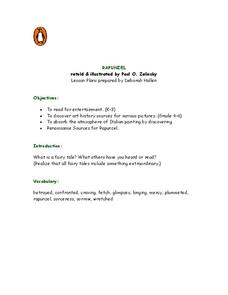Curated OER
Hershey Chocolate Fractions
In order for students to acquire knowledge about math concepts, and in particular fractions, they need concrete ways to practice an abstract concept.¿¿¿ Using Hershey bars builds on prior knowledge as most students have probably...
Curated OER
Dividing by 10
Use money to help scholars understand dividing by 10. They examine a visual displaying one dollar as equivalent to 10 dimes. Then, learners examine sets of 10 dimes to determine how many dollars are represented in each problem. One is...
Illustrative Mathematics
Voting for Two, Variation 1
The votes are in and your mathematicians are going to calculate how many votes each candidate received. Three different solution choices are given, depending on which method is taught. Have your learners set up a table, compute parts, or...
Curated OER
Quarter Combos
Review money with this motivating lesson. Using a simple game, learners practice adding up coins to total $.25. This lesson comes with worksheets that could be used to cement students' knowledge of this topic.
Curated OER
Math Practice-Grade 2
In this grade 2 math practice worksheet, students complete a set of 24 problems using a variety of grade 2 concepts. Answers are included.
Curated OER
Shingle Application
Pupils study shingles and the process of shingling a roof. They demonstrate how to lay shingles and determine the amount of materials needed to shingle a roof of a given size.
Curated OER
William Shakespeare's Julius Caesar: Fate versus Free Will
Tenth graders explore Shakespeare's Julius Caesar. After reading specific scenes, they brainstorm and discuss free will. Students observe a clip from the Dr. Phil television show entitled, "Afraid to Age" and make connections from the...
Curated OER
Measurements - Franklin College
Second graders review measurements in inches and practice measuring different objects. As a class, they estimate various objects in their classroom and compare their estimation to the actual measurement. To end the lesson, they complete...
Curated OER
Classification and Adaptations- Streams, Rivers, and Lakes - Where the Land Meets the Sea And Caribbean Reef
In this science worksheet set, students answer 14 short answer questions about the classification and adaptation of life in streams, rivers, and lakes. They also answer 15 questions about life "Where the Land Meets the Sea" and in a...
Nuffield Foundation
Biodiversity in Your Backyard!
Take your enthusiastic ecologists outdoors to explore the biodiversity right in their own schoolyard! In preparing for this activity, it may be worthwhile to research websites with local flora to help in the plant identification...
Curated OER
A Feature Presentation - Geographic Landforms
Students investigate, identify and compare the various geographic terms that can be used to describe the landforms occurring in the Hawaiian islands.
Curated OER
The Complex Sentence
Develop the writing skills of your middle and high schoolers with this worksheet on complex, compound, and simple sentences. This resource assumes your learners are familiar with simple and compound sentences, so only the complex...
Curated OER
William Shakespeare's Julius Caesar: Fate Versus Free Will
Students relate legends of lucky objects such as a rabbit's foot and principles of Feng Shui to fate and free will concepts that are expressed in Shakespeare's play, "Julius Casear". In small groups, they redesign the palace of Casear to...
Curated OER
Flipped: After Reading Strategy
Everyone can be an expert! After finishing Wendelin Van Draanen's book Flipped, divide your class into small groups. Then, assign each group a topic to become experts on. The resource suggests topics such as characters, themes, setting,...
Curated OER
Ordinals
Use beaded necklaces to practice with ordinal numbers and sequencing. For the first, scholars color the beads blue, red, or yellow based on their given positions (1st, 3rd, etc.). The next set of beads has learners do the opposite,...
Curated OER
Collect and Organize Data - Practice 14.1
In this data collection worksheet, students read the word problem and study the tally chart about favorite sports. Students then use the information in the chart to answer the questions. Students then use the list about students'...
Curated OER
Shooting Basketball Stars
Lessons that have a little competition built into the skills drills because it helps the players focus more on what they should be practicing. Players practice lay-ups, mid-distance shots and long-range shots. They collect stars of...
Curated OER
How Deep Do They Dive
Students calculate and graph the diving depths of various types of whales. They cut out and glue whale pictures on a worksheet to represent the diving depths for five whales, and discuss how people use graphs to communicate.
Curated OER
Volleyball: Winning the Point - Lesson 10
Volleyball - Lesson 10 focuses on how to handle a free ball. What does the passer do? What does the setter do? What does the hitter do? These skills are covered in this lesson. Then the class practices in small groups. This lesson is the...
Curated OER
Measuring Temperature and the Production of CO2 in Yeast
Young scholars use a model experiment to complete an experiment on yeast. In groups, they identify the independent and dependent variables and use the scientific method to complete the activity. They record their observations and discuss...
Curated OER
Light Problems
In this light worksheet, students describe the electromagnetic spectrum based on wavelength and frequency. Students determine the wavelength, frequency, and energy for given point on the spectrum. This worksheet has 10 problems to solve.
Curated OER
Giant Museum
Scholars make a giant scale model of an object. They will take a regular item and enlarge it to five times its length and width. They attempt this same concepts with a 3D model.
Curated OER
Ratio Problem Worksheet 2
Here is a ratio word problem activity in which learners solve a set of eight problems. Answers and hints are available on-line; a reference web site for additional resources is given.
Curated OER
Rapunzel
Youngsters read the story of Rapunzel and go over vocabulary and answer discussion questions. They also list qualities of characters, discuss settings, make a diorama, and more.























